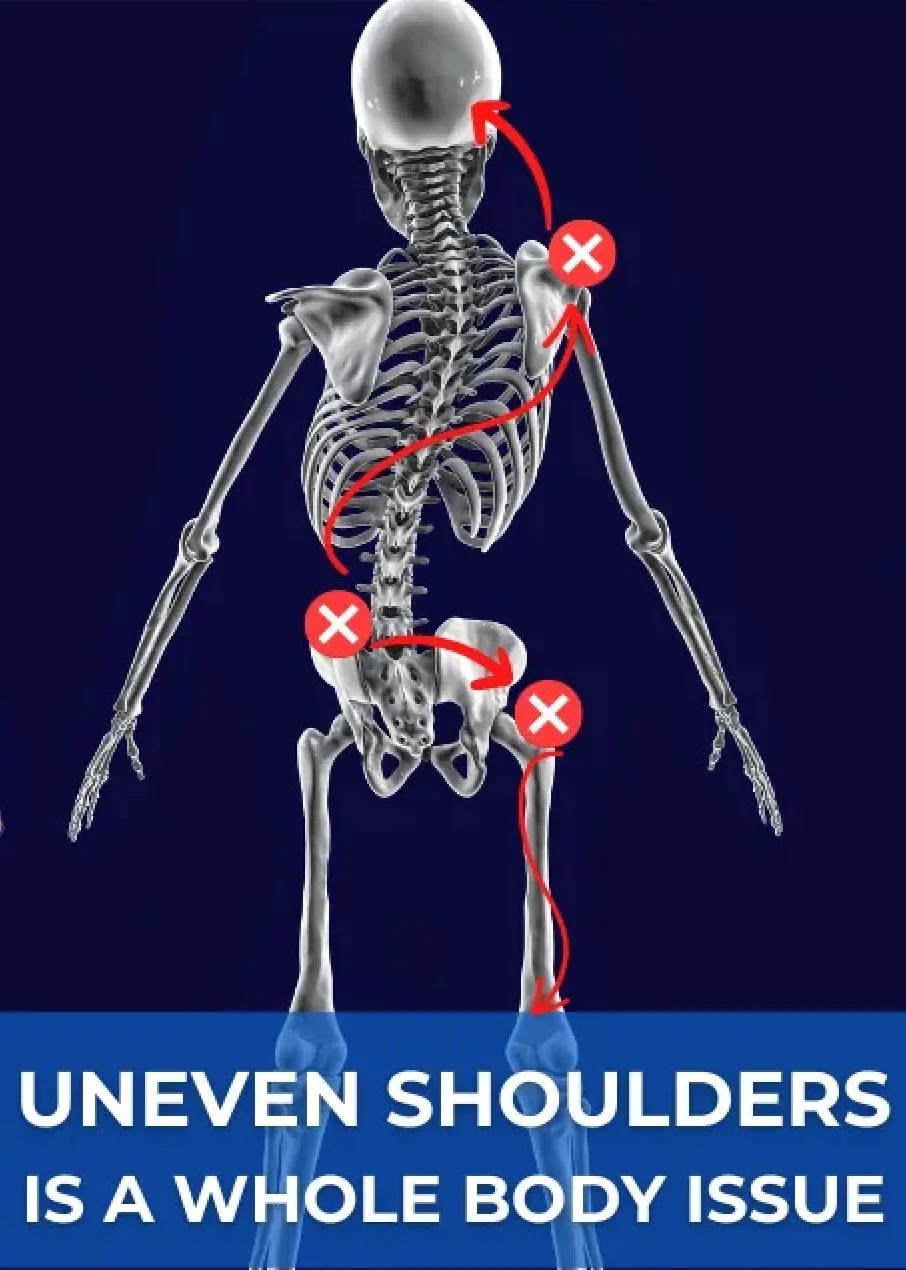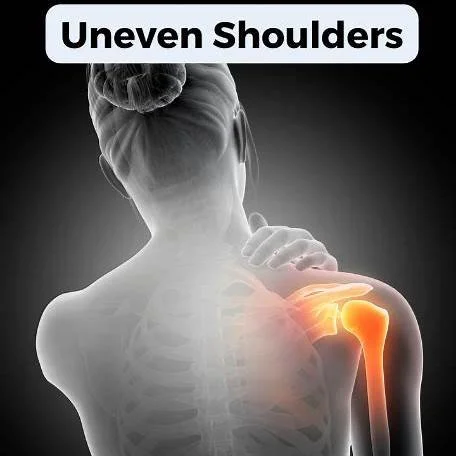Understanding and Addressing Uneven Shoulders: A Guide to Postural Balance
Understanding and Addressing Uneven Shoulders: A Guide to Postural Balance
Uneven shoulders are a common postural issue where one shoulder appears higher or more forward than the other, indicating an imbalance in the body's alignment. This asymmetry can arise from various factors, including muscle imbalances, skeletal deviations, habitual patterns, or past injuries.
Recognizing Uneven Shoulders
To assess if you have uneven shoulders, stand in front of a mirror with a relaxed stance. Observe if one shoulder is noticeably higher or more forward than the other. Additionally, check for any accompanying signs such as uneven hips, spinal curvature, or a protruding ribcage, which may indicate underlying conditions like scoliosis.
activ8posture.com+1activ8posture.com+1activ8posture.com
Common Causes
Several factors can contribute to uneven shoulders:
Muscle Imbalances: Overuse or underuse of certain muscles can lead to uneven shoulder positioning. For instance, tight or overdeveloped muscles like the pectoralis major and minor can pull the shoulder forward and down, while a weaker serratus anterior can cause the shoulder blade to protrude.
Skeletal Deviations: Conditions such as scoliosis, where the spine curves sideways, can result in uneven shoulders.This may be accompanied by a visible curvature or hunching of the upper back.[P]rehab+4yourbodyposture.com+4palermophysio.ca+4Health+2activ8posture.com+2activ8posture.com+2
Postural Habits: Engaging in activities that favor one side of the body, like carrying a heavy bag over one shoulder or habitual slouching, can lead to muscle imbalances and uneven shoulder alignment.Healthroid+1activ8posture.com+1
Potential Implications
While uneven shoulders are often benign, they can lead to discomfort and mobility issues if left unaddressed. Muscle tension and pain may develop in areas like the neck, back, and shoulders. Additionally, poor posture can exacerbate existing health problems, making it more difficult to recover from injuries or manage chronic conditions.
Strategies for Improvement
To address uneven shoulders, consider the following approaches:
Strengthening Exercises: Engage in exercises that target the muscles responsible for shoulder stability and alignment. Strengthening the rotator cuff and upper back muscles can help correct imbalances.thesun.co.uk+19Healthline+19activ8posture.com+19[P]rehab
Stretching: Incorporate stretches that focus on the chest and shoulder areas to alleviate tightness and promote flexibility. For example, doorway stretches can help open up the chest muscles. Real Simple
Postural Awareness: Maintain awareness of your posture throughout daily activities. Ensure that your shoulders are aligned and avoid habits that contribute to asymmetry, such as leaning to one side or slouching.activ8posture.com+1Healthline+1
Professional Guidance: Consult with a healthcare professional or posture specialist for a personalized assessment and tailored treatment plan. They can provide specific exercises and adjustments to address your unique posture needs.
Conclusion
Uneven shoulders are a common postural concern that can be managed with proper awareness and corrective strategies.By understanding the causes and implementing targeted exercises and stretches, you can improve your posture and reduce associated discomfort. Remember, consistency is key, and seeking professional advice can provide additional support in achieving optimal postural alignment.
🔗 External Linking (Authoritative Sources)
🧠 Medical and Physiotherapy Insights
Healthline – Uneven Shoulders: Causes, Symptoms, and Exercises
An overview of common causes of uneven shoulders, including muscle imbalances and scoliosis, and recommended exercises for correction.
HealthlineMedical News Today – Uneven Shoulders: Causes, Treatment, and Exercises
Discusses various factors contributing to uneven shoulders and provides guidance on treatment and exercises.
Medical News Today
🧘♀️ Postural Awareness and Lifestyle Adjustments
Treating Scoliosis – Uneven Shoulders: Scoliosis, Exercises, Treatments, and More
Explores the relationship between scoliosis and uneven shoulders, with advice on exercises and treatments.
Treating ScoliosisPosturepro – How to Fix Uneven Shoulders: A Complete Guide
Addresses the connection between forward head posture and shoulder misalignment, with corrective measures.
PostureproPosturepro



